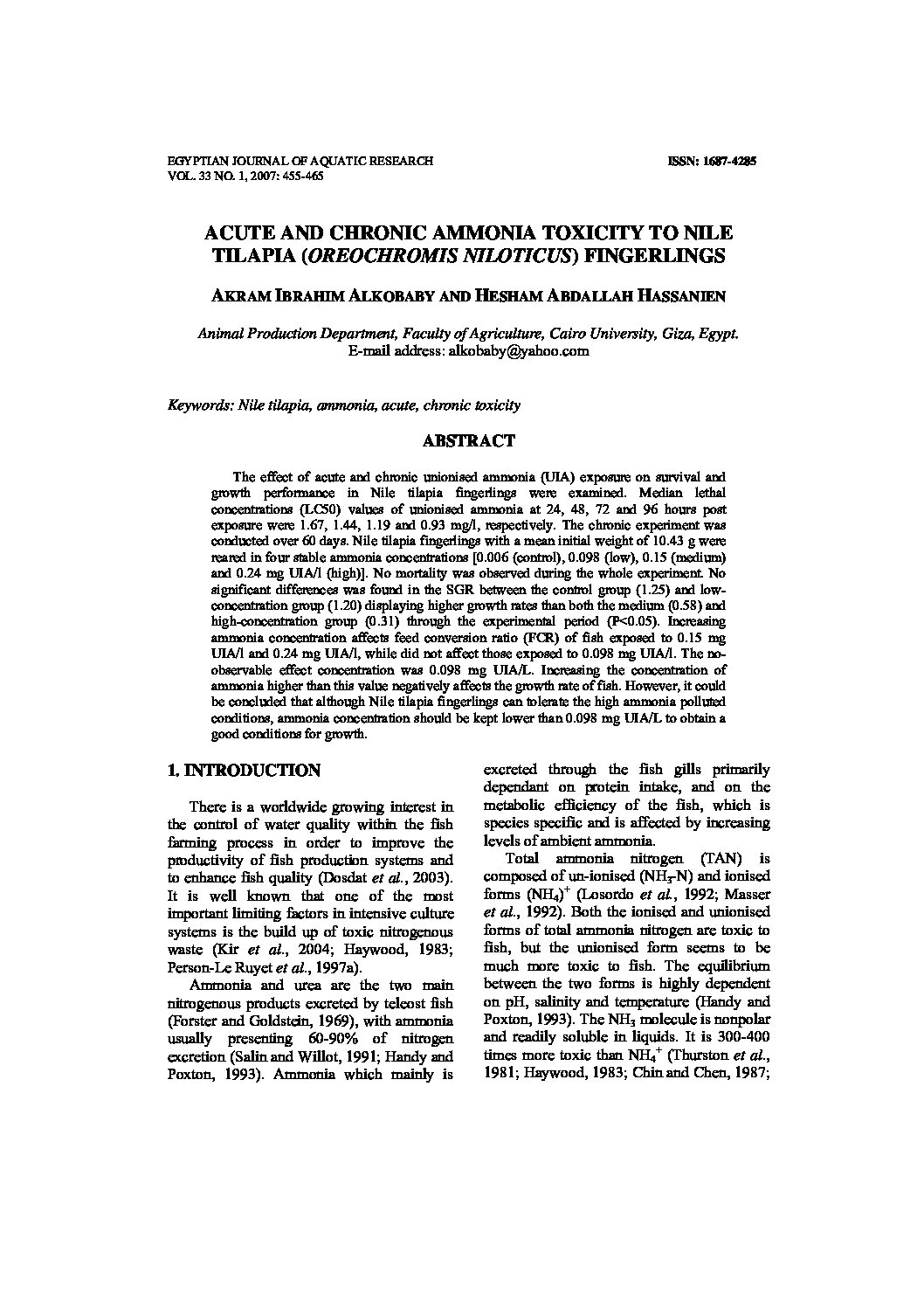Categories
vol-33NUTRIENTS AND PHYTOPLANKTON DISTRIBUTION IN THE
COASTAL WATERS OF AQABA GULF, RED SEA, EGYPT
MOHAMED ZEIN ALABDEIN NASSAR
National Institute of Oceanography & Fisheries, Red Sea Branch, Suez, Egypt
[email protected]
Keywords: Phytoplankton abundance, diversity, nutrients, Aqaba gulf.
ABSTRACT
Phytoplankton distribution and species diversity were estimated and discussed in the
coastal waters of the Aqaba Gulf during winter, spring and summer, 2006. The
phytoplankton community included 127 taxa belonging to diatoms (75 spp), dinoflagellates
(27 spp), blue-green algae (16 spp), green algae (8 spp) and one species of silicoflagellates.
The winter showed a high-pronounced peak of phytoplankton (average of 35,110 unit/L),
and then followed by spring (average of 21,374 unit/L). While, severe drop of
phytoplankton populations was observed in summer (average of 6,005 unit/L). Also, the
numbers of phytoplankton species were higher in winter and spring seasons (86 and 82
species, respectively) than summer (51 species). These results may be due to the effect of
winter monsoon, which increase the productivity of the Red Sea. Generally, the highest
abundance of phytoplankton was observed at Nuweiba (average of 27,758 unit/L) then
followed by Dahab (19,886 unit/L), Sharm El-Sheikh (18,452 unit/L) and Taba (17,221
unit/L). Relative high values of phytoplankton diversity (2.58-3.64 nats) as well as the low
concentrations of nutrients indicated that the Aqaba Gulf is still fairly unpolluted and has an
oligotrophic nature. This is confirmed with the significant inverse relation between
diversity values and the total counts of phytoplankton (r = –0.61 at p < 0.05 and N =12).
Statistically, the correlation matrices indicated that the total counts of phytoplankton were
positively correlated with nitrate content (r = 0.68), dissolved oxygen (r = 0.64) and
dissolved inorganic phosphate (r = 0.63). Whereas, they were inversely correlated with
water temperature (r = –0.69) and pH value (r = –0.58) at confidence level 95% and N
=12. Also, the stepwise multiple regressions showed the high dependence of phytoplankton
standing crop on the dissolved phosphate, nitrate and pH values then followed by ammonia
concentrations, dissolved oxygen and water temperature. Thus, a regression model is
obtained and could be applied to calculate the total counts of phytoplankton in the coastal
waters of Aqaba Gulf in these periods







